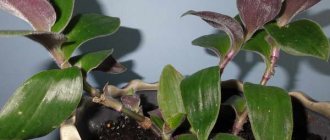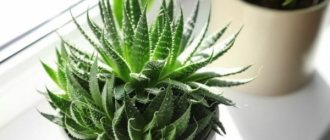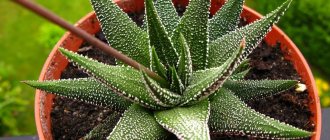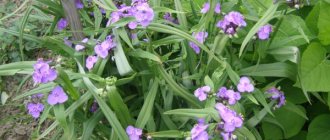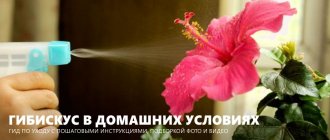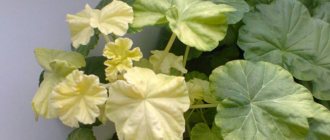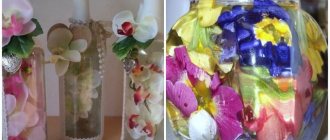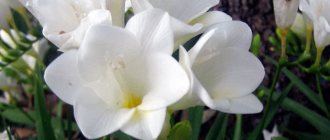Flower growers have many plants, among which Tradescantia is very popular. This plant is easy to care for, grows very quickly, and can not only decorate the interior of the house. It will serve as a home first aid kit due to its medicinal properties. Let's consider what its homeland is and its medicinal properties.
Description of Tradescantia
The homeland of Tradescantia indoors is the tropical and subtropical regions of both Americas. It is a perennial herbaceous plant with a long stem. The latter is densely dotted with small fleshy ovoid leaves. Thanks to their beauty, Tradescantia has gained such popularity among modern lovers of indoor flowers. In different species of this plant, the color of the leaves may vary.
There are flowers with purely green plates, as well as with two-color or even purple ones. Both the leaves and the stem are covered with thick whitish hair. Tradescantia flowers (a photo of this plant can be seen on the page) are not very spectacular. The color of the buds can vary from white and pink to blue and purple. Tradescantia grows quite tall, losing some of its decorative qualities. Therefore, experts advise replanting or updating it more often.
Tradescantia indoors - beneficial properties
The plant performs not only a decorative function. Tradescantia is an excellent air purifier. In addition, many pets love to feast on it. The flower plays a huge role in folk medicine: decoctions, tinctures and other homemade remedies from it are used with impressive success to treat many diseases.
Indoor air purification
The plant successfully filters out various volatile organic compounds. In addition, the flower is able to neutralize electromagnetic radiation, cleans the air from dust, tobacco smoke, and harmful fumes of toxic materials. It is recommended to place it in rooms where there are a lot of household appliances and computers. The bush not only cleans, but also moisturizes the air.
Nutrients for pets and fish
Pets simply adore tradescantia and feast on it with pleasure. Cats especially like Tradescantia. They love to pluck leaves that are rich in nutrients. They are also eaten by domestic ornamental birds, hamsters, and guinea pigs. If you place a pot of netcreasia on the edge of your home aquarium, you will provide fish, turtles and other inhabitants with tasty and healthy food.
Tradescantia in nature
As already mentioned, the birthplace of Tradescantia indoors is the American subtropics. This plant is most widespread in the southeastern part of North America. In the countries of this continent, Tradescantia is considered a malicious weed. In nature, this is a ground cover plant with rather sparse leaves and a shallow root system. This flower was named in honor of the world-famous naturalist, experienced gardener and enthusiastic collector - John Tradescant. He served as the chief gardener to the English king and traveled a lot around the world, collecting the most beautiful and interesting plants. It was this researcher who first made a description of the Commelinaceae family, including Tradescantia.
Varieties and varieties
There are more than 30 species and hundreds of varieties of Tradescantia in the world, but only 70 varieties are indoors. However, this number is more than enough to create a rich, beautiful and varied greenhouse at home.
- Tradescantia Virginiana is one of the first varieties to come to Europe around the 18th century. It is an almost classic representation of Tradescantia - it has straight climbing shoots, small pinkish flowers and simple leaves, sometimes reaching up to 20 cm in length.
- Tradescantia Anderson is a hybrid species that was once bred by crossing Tradescantia Virginiana with other varieties. Today this species is surprisingly diverse. It includes varieties with green, purple, yellow and variegated leaves and flowers in every shade of the rainbow. The Anderson variety is highly valued for its highest unpretentiousness among all known Tradescantias.
- Tradescantia Reo is a once separately distinguished plant species, today classified as Tradescantia. It stands out for the two-color color of its foliage. Very often, the upper part of the leaf is colored light green or dark green, and the lower part is purple or burgundy.
- Tradescantia striped - also called zebra. As the name suggests, its main feature is the alternation of light and dark stripes on the leaf blade. They are colored reddish underneath. Striped Tradescantia is the most popular type of plant in indoor floriculture.
Zebrina tradescantia
Tradescantia, of which there are various types, is usually a creeping plant. This type of exception does not represent an exception in this regard. This is a rather beautiful hanging plant with purple-red stems. The leaves of this variety are ovate, with a pointed tip, reddish-green, with silver veins. The bottom of the plates have a purple tint. The flowers of zebra tradescantia are pink and can reach 1-2 cm in diameter.
Contraindications
Before using drugs made from indoor flowers, you should consult your doctor.
When taking folk remedies, you must remember the existing contraindications:
- individual intolerance;
- children under 3 years of age;
- pregnancy and lactation;
- when treating diabetes mellitus, monitor blood sugar levels;
- the course of taking the drugs should be no more than 1 month, otherwise side effects may occur;
- In case of an overdose of drugs, allergic reactions and nausea are possible.
We strongly recommend consulting a doctor before any self-medication.
Treatment with Tradescantia preparations can cause more benefit to the body than harm. When used in the correct dosage and duration of treatment, the plant will help cope with the disease.
Riverside tradescantia
The shoots of this species are also creeping. They can reach four meters in length. The homeland of Tradescantia is America, where this wonderful plant (when in contact with water or soil) produces roots at the places where the leaves are attached. Of course, this property is preserved even in room conditions. The leaves of this variety can reach 6 cm in length and are ovoid in shape. Their color varies depending on the variety. Very beautiful, for example, is the riverside Tradescantia Variegata, which has white-green leaves. Quicksilver's are silvery-green, while Maiden's Blush is prized for the bright pink color of its young shoots.
Types of Tradescantia
There are many types of plants, some even poisonous. They all fall into two broad categories. Garden hybrids include the following types:
- Anderson and its varieties;
- Virginskaya;
- Scaphoid;
- Sillamontana;
- Purple;
- Reo bractulatum (Tradescantia variegated);
- Riverside (quicksilver).
There are those subspecies that are more suitable for keeping indoors. These include the following types and varieties:
- White-flowered;
- Motley;
- Zebra-shaped (hanging);
- Blossfeld.
Garden hybrids
There are many varieties of the flower that can survive outdoors. The most common is Anderson's Tradescantia (Tradescantia Andersoniana). Belongs to the category of complex garden hybrids. The leaves are linear-lanceolate, violet-green in color. The plant reaches from 30 to 80 cm in height. Stems are branched, angular, erect. The flowers are flat. They come in pink, white, purple, and blue. Tradescantia blooms from early summer until September. There are several varieties, characteristics of the best:
- JG Weguelin. With large bright blue flowers.
- Osprey. The petals are white.
- Sweet Kate. Dark blue flowers.
- Leonora. Purple petals with a blue tint.
- Purewell Giant. The flowers are carmine red.
- Iris. Rich blue Petals.
- Innocence. The flowers are white.
- Red Grape. Raspberry petals.
Virginia tradescantia (Tradescantia virginiana) is another garden hybrid, a hardy ground perennial. It is a subspecies of Tradescantia Andersoniana. The height of the erect stems is 50-60 cm. Linear-lanceolate leaves, the length of which is up to 20 cm. Flowers with three petals, up to 4 cm in diameter. The inflorescences are umbellate, on the tops of the stems. The fruit is a capsule that opens with longitudinal flaps. Tradescantia blooms from July to August, the period takes 60-70 days. Different varieties have different petal colors:
- Coerulea – blue;
- Rubra – red;
- Atrorubra – blood red;
- Rosea - pink.
Scaphoid tradescantia (Tradescantia navicularis). A garden succulent plant native to Mexico and Peru. Ampelous, highly decorative. It is characterized by the following features:
- Shoots are bare, creeping.
- Ovate or boat-shaped leaves. They are small, only 2-4 cm in length, up to 1 cm in width. The leaves are thick, keeled below. They are pointed, with cilia along the edges. Densely strewn with purple dots.
- The inflorescence is apical.
- The petals on the flowers are pink and bright.
Tradescantia sillamontana is a very original garden plant. Everything is covered with white hairs, as if wrapped in felt. This is how netcreasia protects from the sun and retains moisture. If the lighting is poor, the villi become sparse. Hairy stems are straight. The leaves are arranged not in two rows, but spirally. There is rooting, underground shoots. The ground part branches and is capable of propagation by cuttings.
Tradescantia crassula is a moisture-loving garden hybrid. The plant has long, thick leaves, almost without a petiole, and absolutely not shiny. They have a noticeable border around the edges. While the leaves are young, they are rolled into one tube. In the sun they quickly fade and become translucent. This variety requires much brighter lighting than other subspecies.
Setcreasea purpurea or pallida is an incredibly popular plant in Argentina. Bright purple color. Stems are erect or slightly decumbent, very thick, succulent. Setcreasia purpurea is often planted along walls, under windows as a border, on lawns and flower beds. The larger the group of seedlings, the more beautiful and impressive it looks. Purple heart blooms with lilac-pink flowers in the warm season.
Riverside or myrtifolia (Tradescantia fluminensis, myrtifolia) is a garden hybrid from Brazil. Peculiarities:
- Sprawling shoots. Purple with light green spots.
- Leaves are ovate. Length – 2-2.5 cm, width – 1.5-2 cm. The top is dark green, the bottom is lilac-red. The leaves are smooth on both sides and have a short petiole.
Indoor varieties and types
Some types of plants can exist indoors. This is the white-flowered Tradescantia albiflora. It is also called tricolor, uridis. It has oblong-broad-ovate leaves. They are pointed at the apex and bare on both sides. Length 4-6 cm, width - 2-2.5 cm. The color of the leaves is green or silver-variegated, the surface is glossy. Creeping shoots. Apical, less often axillary inflorescences, small white flowers. Varieties:
- Aureovittata. The leaves have yellow-golden stripes on top.
- Aurea. The leaves are yellow with green stripes on them.
- Tricolor. Leaves with white and lilac-pink stripes.
- Albovittata. There are white stripes on the leaves.
Tradescantia blossfeldiana is a plant native to Argentina. Perennial, semi-succulent, herbaceous. Stems are greenish-red, erect. The leaves are elliptical or oblong, the apex is acute or pointed. Length - 4-8 cm, width - 1-3 cm. The leaves are dark green, slightly reddish on top, and purple on the bottom, covered with white erect hairs. The flowers are in paired curls, on long stalks, and have stamens. They have three petals, white below, bright pink above.
Zebra or hanging (Tradescantia zebrina or pendula). Houseplant option. It is easy to care for, looks very beautiful and has healing properties. Has creeping or hanging shoots. They are naked, slightly reddish. Oblong ovate leaves, 8-10 cm long and 4-5 cm wide. Their upper surface is green, with two longitudinal stripes of a silvery hue. The leaves are red below. The flowers are violet or purple, small.
Tradescantia multicolor is a very beautiful, unpretentious small-leaved indoor plant. The main distinctive features of the variegated variety:
- The leaves are dense, small, green. Covered with white or pink stripes.
- Densely growing species.
How to care for a plant
The homeland of Tradescantia indoors is the swampy areas of the tropics. Therefore, all its varieties are moisture- and light-loving. It is best to place a pot with this plant on a windowsill. Its leaves and stems should receive at least some direct sunlight. In partial shade, Tradescantia (with purely green leaves) will also grow, but its color will not be as bright.
This plant needs to be watered frequently in the summer. The soil under Tradescantia should be constantly moist. In cold weather, watering is reduced, but not completely canceled. This indoor plant also tolerates dry air very poorly. Therefore, in summer it is sprayed at least twice a day.
Fertilize Tradescantia in spring and summer. In this case, they use a special fertilizer for ornamental plants, which can be purchased in a specialized store. Apply it to the soil once every two weeks.
In what form is it taken for treatment?
Used in various forms to treat diseases. It is made from:
- decoctions;
- tinctures;
- infusion;
- fresh juice;
- fresh leaves, ointment;
- balm;
- oil.
To prepare juice from the plant , the plucked leaves are first soaked in clean, settled water for several hours. After which they are passed through a meat grinder or juicer and the juice is squeezed out. It is capable of having an antimicrobial effect.
Fresh leaves and stems are taken for infusion They are placed in a pan with boiled water at room temperature and infused for 24 hours. After which the leaves are squeezed out and the infusion is used for medicinal purposes.
A glass of crushed leaves is placed in a jar and filled with vodka or alcohol, and infused for a month. It is best to store the tincture in a cool, dark place. The jar must be tightly closed. It should be strained before use.
To prepare the ointment you will need fresh leaves. They are ground into a paste and mixed with any cream. The composition must be stored in the refrigerator.
The balm is made from freshly squeezed juice, honey, and wine. All ingredients are mixed and infused in a dark, cool place for half a month. It must be strained before use.
The oil is made from milk-cut stems and leaves of the flower. They are poured with warm olive oil and left for a month. Before use, you should clean it of plant residues.
This plant can be prepared in different ways depending on the ailment that needs to be cured
Reproduction
America is the birthplace of Tradescantia, where it reproduces mainly vegetatively, that is, it produces roots from the nodes of the stem. In indoor conditions, you can grow it from seeds, from cuttings, or by dividing the bush. The second method is used most often. This plant can be propagated using cuttings at any time of the year. For this purpose, planting material about 15 cm long is suitable. Cuttings should be planted 5-8 pieces per pot. Their rooting occurs very quickly - within a few days.
Tradescantia seeds are very difficult to obtain, and therefore this plant is rarely propagated in this way at home. Bush division is used more often. However, Tradescantia can be propagated in this way only in the spring, that is, when young shoots begin to grow on it.
Features of care at different times
In the case of Tradescantia, there are not very many seasonal rules, since the flower is really unpretentious. But in order for the plant to grow better and look as good as possible, it is still advisable to follow some simple tips.
in spring
In spring, Tradescantia should be watered more actively than in autumn and winter. You should not flood the plant; excess moisture must be removed from the tray under the container. But the general intensity is 2-3 waterings per week.
Fertilizers should be treated with caution. In general, Tradescantia will not like frequent fertilization, so on average gardeners fertilize 1-2 times a month, not more often.
REFERENCE. It is better to apply fertilizers not according to the instructions, but at half the recommended rate.
Complex universal mixtures can be added to the soil from the beginning of March.
In summer
In summer, you should pay more attention to watering. If it is very hot, then it is important for Tradescantia to withstand high humidity. Watering can become even more intense - up to 1 time in two days. But in general, it is important to water the flower when the top layer of soil dries out to about 1-2 cm in depth.
Feeding should be continued if there is a desire to grow a large bush (and thus, for example, form a living decorative wall in the house). But still they are not applied more than 2 times a month.
in autumn
In autumn, it is advisable not to feed the flower, but water it abundantly if the season is warm. If the cold comes early, then watering is reduced.
ON A NOTE. And there is one “but”. Tradescantia can grow without a dormant period at all, literally all year round. But then for the cold seasons you need to create all the conditions: a lot of light, warmth and always good hydration.
in winter
In the coldest time of the year, caring for Tradescantia involves only proper watering. There is no point in dealing with this matter. You need to wait for the soil to dry completely and only then moderately moisten the plant at the root.
On average, Tradescantia is watered no more than once a week in winter.
What problems may arise when growing Tradescantia?
From time to time, Tradescantia at home begins to look sick and lethargic. The reasons may vary. For example, if the tips of Tradescantia leaves begin to dry out and turn brown, it means that you need to increase the humidity in the room or at least move the pot away from the central heating radiator. The cause of this problem is usually excessive dry air.
If this is combined with lethargy of the stems, it means that the plant simply does not have enough water. That is, you need to increase the frequency of watering. If there is too much water, the Tradescantia stem near the soil will turn brown and begin to rot. Lack of lighting is manifested in this plant by loss of leaf color.
Passport of indoor plants in the group “Stars” presentation for a lesson (middle group) on the topic
Slide 1
State budgetary preschool educational institution kindergarten No. 39, Moskovsky district of St. Petersburg (Violet, Ficus, Geranium, Balsam, Chlorophytum, Sansevieria, Tredescantia, Peperomia obtufolia) Prepared by 1st category teacher Yusubova I.I. St. Petersburg 2022
Slide 2
Benefits of indoor plants Properly placed plants have a good effect on the emotions and health of children, relieve fatigue, and cause joy. In addition, perennials create freshness and soften dry indoor air. This is especially important during the heating season. With the help of plants, it is quite possible to improve the psychological climate and hygienic environment in the group. For kindergarten premises, plants that produce phytoncides - light, natural substances that have bactericidal properties - are of great importance. We know that babies are very sensitive to various infections; they often carry and spread bacteria and viruses. To do this, they just need to cough or sneeze. Perennials with phytoncidal properties improve the air environment in groups.
Slide 3
Indoor plants allowed in kindergarten - aloe, crassula, peperomia, Japanese aucuba; - chlorophytum crested; - fuchsia, begonia, azalea; - geogenanthus; - gasthenia; - Kalanchoe; - Chinese rose; - gloxinia; - Crassula; - coleus; - two-color caladium; - hyposthes with multi-colored leaves.
Slide 4
The following types of plants cannot be kept in gardens: - Dieffenbachia. It is forbidden to touch them; the juice of the leaves contains poison. - all types of cacti. Plants have thorns and thorns, and children can be seriously injured if they touch them out of curiosity. - oleander, lilies. If a child comes into contact with these flowers, undesirable consequences are possible. Their smell may well cause a severe headache. — Fragrant geranium. Surprisingly, this plant, familiar to everyone since childhood, can provoke an asthma attack or cause allergies, as it releases essential oils.
Slide 5
Conventions Air humidity Relation to light Endurance Watering Hardy Capricious Normal temperature Regular spraying Good drying of the soil Light drying of the soil Constantly moist soil Water level in the pan Direct rays Diffused light Penumbra Shade 18 C
Slide 6
UZUMBAR VIOLET A perennial herbaceous plant with a short, succulent stem bearing a rosette of leaves. Leaves are up to 8 cm long, petiolate, heart-shaped at the base, broadly oval or rounded, with a wavy edge, dark green, reddish, heavily pubescent underneath. Flowers are collected in 2-7 flowering inflorescences, on long axillary peduncles. The corolla is dark purple with a five-lobed, two-lipped limb (2 lobes are shorter than the other 3). Light: bright. The plant can tolerate direct sunlight. Temperature: during the period of active growth 18-25°C. Watering: water is poured into the pan every other day in the summer, twice a week in the winter. Air humidity: does not play a significant role. 18 C
Slide 7
FICUS rubber Light: bright diffused. Temperature: in spring and summer 23-25°C, in winter most species need a temperature of 12-15°C, but they tolerate wintering well in the warmth of a living room. Watering: abundant in spring and summer. In autumn, watering is reduced; in winter, watering is moderate. Air humidity: the plant can tolerate dry air, but responds well to spraying. Ficus does not like change, so it is better to immediately determine a permanent place for it and, if possible, not move, move or disturb it. In summer, ficus can be taken out into the fresh air, onto a balcony or terrace. A bright place with shade from direct sunlight in summer is suitable for ficus.
Slide 8
GERANIUM (pelargonium) Geranium can be grown on the windowsill, in the garden or on the balcony. In addition to its beauty, geranium creates a positive aura around itself. It is easy to care for, it is rarely susceptible to disease, requires moderate watering and a not too nutritious soil mixture, is resistant to drought, and has high vitality. They bloom for a long time with large and colorful inflorescences. Light: bright. The plant tolerates direct sunlight. Temperature: in summer - room temperature. In winter, pelargoniums are kept as cool as possible, at a temperature of 8-12°C. Watering: moderate, as pelargoniums do not like waterlogging. In winter, plants are watered very sparingly. Air humidity: On hot days you can spray. 18 C
Slide 9
BALSAM Light - bright light Temperature - In winter, keep at a temperature of 10-16C. The plant can tolerate higher temperatures with good lighting and high humidity. In summer it is recommended to take it out into the open air. Watering - plentiful, the soil should be constantly moist, air humidity - moderate, from time to time the leaves should be sprayed, avoiding water getting on the open flowers. A herbaceous plant up to 60 cm tall from the balsam family, native to the tropics of East Africa. It first appeared in Europe in 1596. It is popularly called the light - for the bright color of the flowers that bloom most of the year. The stems are fragile and juicy, break easily, and juice flows out of the break. The leaves are fleshy, ovate, and with a lack of moisture they quickly droop. The flowers in the leaf axils are red, purple-pink, with a long curved spur.
Slide 10
CHLOROPHYTUUM Light: Bright diffused light. Grows well near an east or west window. In a place that is too dark, the plant loses its decorative appeal. Temperature: Moderate. In winter, not lower than 18°C. Of course, the unpretentious chlorophytum will not die at unfavorable temperatures, but this will certainly affect its appearance. Watering: Abundant from spring to autumn. The soil should be kept moist all the time. Moderate in winter. Air humidity: In summer, it is useful to spray the leaves from time to time and give them a warm shower. Spraying is required if the plant is kept near a heating system. Homeland - South America. Chlorophytum is one of the most common indoor plants. This is not surprising: it grows quickly, has beautiful curved leaves, and in spring and summer, first small white flowers and then tiny rosettes of leaves appear on thin stems. They can be separated and rooted. Another reason for the popularity of chlorophytum is its hardiness. Chlorophytum is a light-loving plant.
Slide 11
Tradescantia Light: This plant loves light. Therefore, it is necessary in a room with maximum illumination from sunlight and artificial lighting. Temperature: the optimal temperature required for comfortable growth of Tradescantia is considered to be 24-26 degrees, in winter 10-12 degrees. Watering: Tradescantia is considered a marsh plant, so it requires frequent watering. Air humidity: in summer, it is useful to spray the leaves from time to time and take a warm shower. Spraying is required if the plant is kept near a heating system. The Tradescantia flower belongs to the Commelinaceae family. Homeland: North and South America. This is a genus of perennial evergreen herbaceous plants of the Commelinaceae family. Many species are popular indoor plants.
Slide 12
Clivia Light: this plant reacts extremely negatively to direct rays of the sun, so it needs to be shaded from them Temperature: feels very good at normal room temperature. During the growing season, it is best to provide the plant with a temperature within 20–25 degrees. Watering: This plant should be watered moderately, and care should be taken to ensure that water does not accumulate in the pan. Air humidity: this flower does not have any special requirements for air humidity. A perennial plant from the amaryllis family. When they see it, most people freeze in delight at the unusually growing leaves. The wide, belt-shaped leaves are dark green in color and arranged in an unusual manner. They form 2 absolutely even rows on opposite sides; the shape of the leaves resembles an unfolded fan or a kind of plume. 18 C
Slide 13
Sansevieria Light: in nature, the sansevieria flower grows in bright light, but it must be diffused. Temperature: The plant is not capricious, so it is not demanding to maintain only a certain temperature. Watering: it should be moderate. Air humidity: too low a temperature is not suitable for such a plant. 18 Sansevieria is a stemless evergreen plant belonging to the Asparagus family (formerly this genus was called Agave). Naturally found in rocky and dry regions of the subtropics and tropics of Madagascar, Africa, Indonesia and South Florida.
Slide 14
Peperomia obtufolia Light: peperomia obtufolia does not tolerate direct sunlight, however, insufficient lighting can cause the leaves to become shredded and lose their usual color. Temperature: Peperomia requires sufficient heat. Watering: Peperomia obtufolia requires regular and abundant watering, but the substrate should not be allowed to become waterlogged or dry out. In summer, the plant needs to be watered once every 10 days, and in winter - once every 2-3 weeks. Air humidity: the optimal temperature for its cultivation is 20–25 ºС, but not less than 16 ºС. 18 C Peperomia obtufolia is a low-growing evergreen plant. The genus Peperomia belongs to the pepper family, and is considered the most numerous, with about nine hundred species. This is a low, about 45 centimeters in height, evergreen plant with many thick shoots.
Slide 15
18 C Violet 18 C Clivia 18 C Sansevieria 18 C Tradescantia Impatiens Ficus 18 C Geranium
Slide 16
18 C Violet 18 C Clivia 18 C Sansevieria 18 C Peperomia obtufolia Chlorophytum Ficus 18 C
Slide 17
Violet
Pests and diseases
Tradescantia flowers are quite beautiful, but, unfortunately, they are often attacked by harmful insects. One of the most dangerous is the spider mite. In addition to infection, dry air leads to its appearance on the leaves that it damages. A sign of a plant being damaged by spider mites is the presence of cobwebs in the internodes. The leaves of diseased plants begin to fall.
In order to rid Tradescantia of this scourge, you need to rinse it under running water and wipe the leaves with soapy water. You can also spray the plant with a 0.15% Actellica solution.
So, now you know that the birthplace of indoor Tradescantia is America. Despite its light and moisture-loving nature, this plant is considered unpretentious by gardeners. In any case, it is, of course, worth using it to decorate apartments, offices or balconies.
Possible difficulties
Few leaves on elongated stems - due to lack of light, moisture and nutrition.
Variegated leaves turn green due to lack of light.
The stems become limp and yellow spots appear on the leaves due to lack of moisture.
By spring, the plants can stretch out, the leaves from the base of the stem dry out , they can be renewed with young rooted cuttings.
Excessively dry air causes the tips of plant leaves to turn brown .
With insufficient lighting, inept cuttings or pruning, the beautiful stripes on the leaves of plants may disappear .
Plant support
Most often, Tradescantia is grown in hanging pots or cache-pots as an hanging plant - hanging lashes of green or variegated leaves look impressive. But there are options for unusual uses of tradescantia for room decoration. For example, using mounts for tradescantia stems on the wall, you can create an unusual living decorative wicker decoration. An interesting option would be to use a vertical support.
Various supports for Tradescantia can be used to advantage in room decor

